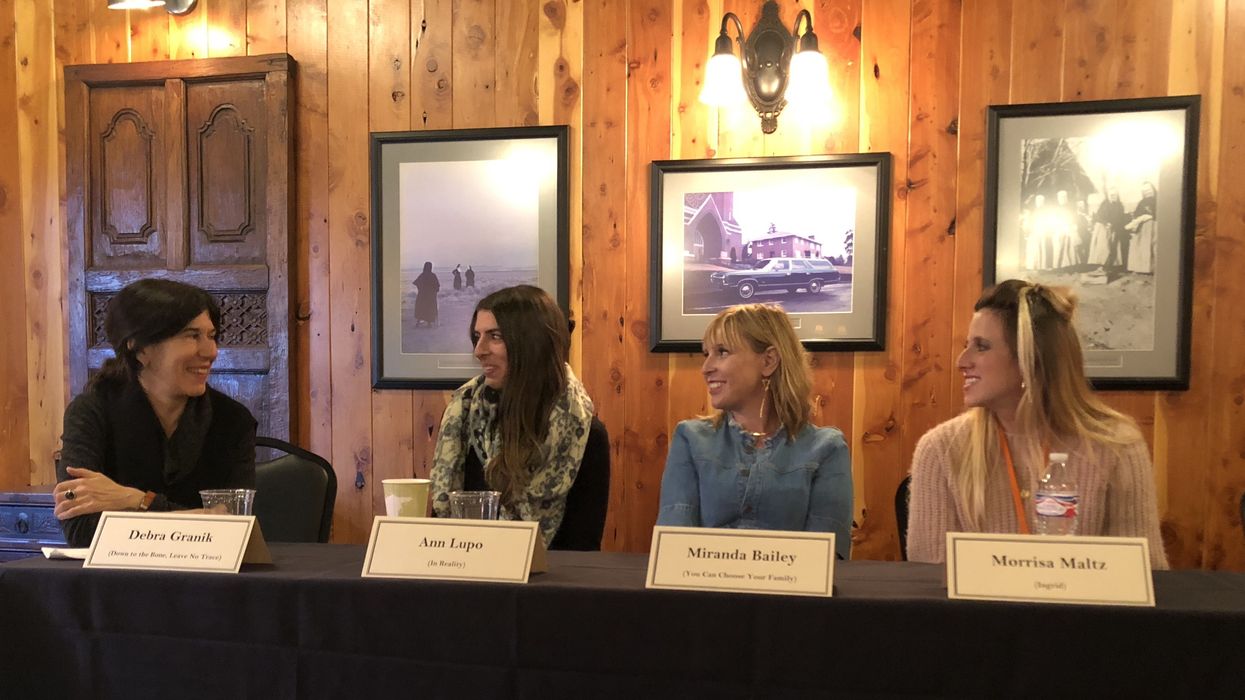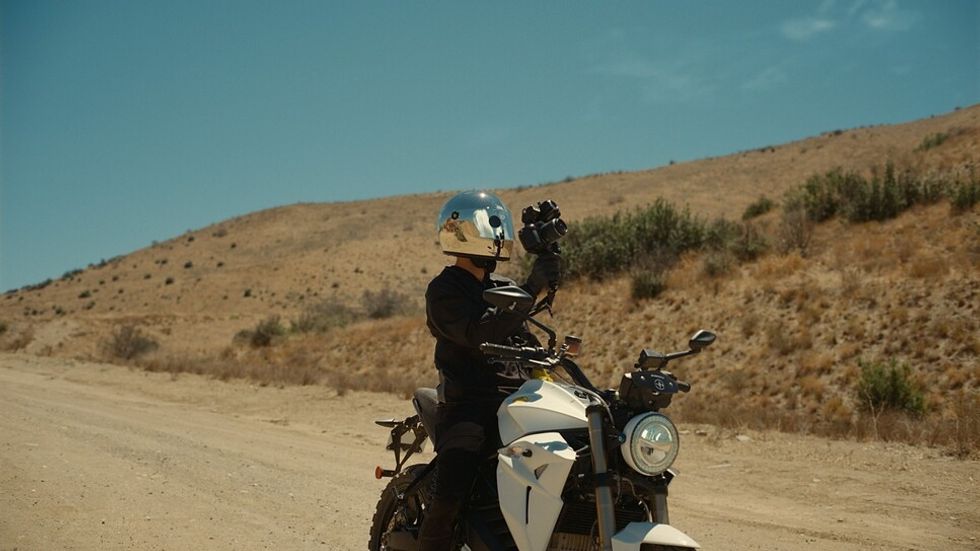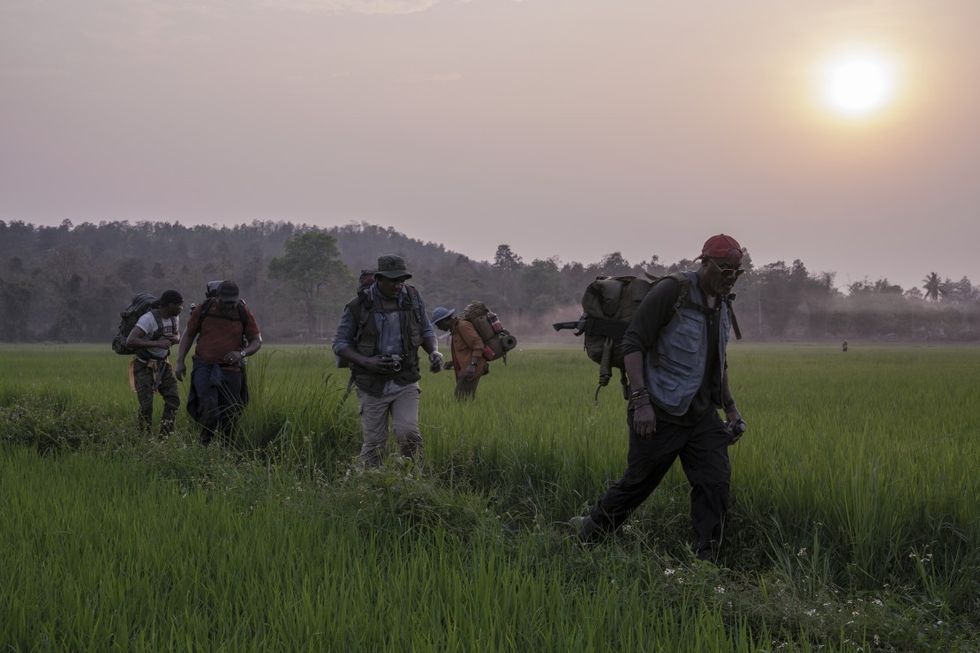4 Tips to Give You the Inspiration You Need to Make Your First Feature
It's time to take that next step.

Taking that first big leap into feature filmmaking can be an incredibly daunting step. During a panel at the 2018 BendFilm Festival, three directors talked about how they managed to make that jump. Academy Award-nominated Debra Granik (Down to the Bone, Leave No Trace) moderated the discussion and shared her own experiences on the topic.
The panelists included Miranda Bailey (You Can Choose Your Family), Ann Lupo (In Reality), and Morrisa Maltz (Ingrid), whose films were all screened at 2018 BendFilm. Their professional backgrounds could hardly be more different from each other, illustrating the point that there is no one clear path to making your first feature.
Bailey started out her career as an actress and has produced films such as Diary of a Teenage Girl, Swiss Army Man, Don’t Think Twice, the Academy Award-nominated The Squid and the Whale, and many others.
Lupo had co-directed and co-produced the feature documentary Documented, edited music videos and commercials and collaborated with YouTube sensation Casey Neistat on several short films.
Maltz, a visual artist and director, had directed a number of live-action short films, video installations and music videos before undertaking her first feature, the documentary Ingrid. The poetic cinematic portrait focuses on Ingrid, a German-born Texas woman in her 70s who left her family and career to become a reclusive hermit who lives in nature and makes art.
Granik, who began her career in educational and industrial filmmaking before making her 2004 feature debut with Down to the Bone, asked the filmmakers to detail their paths to making their first features. They shared these tips below.

1. Get experience in other aspects of filmmaking
Lupo said she’s basically been preparing to make a feature film since she was a child.
“I grew up making movies with my family as a kind of bonding activity,” Lupo said. “We would make these D-horror movies during the summers and then that translated into learning how to edit and completely falling in love with that at a very early age.”
But Lupo explained it was through editing commercials and music videos and working for other filmmakers that she learned the ins and outs of filmmaking.
Bailey's background as an actor and a producer came in handy when she started directing. “I knew the language of how to communicate with those departments and I knew what was annoying for both of those departments and what was needed and what was welcome.”
"“I'm investigating myself, which is semi-impossible because you can’t see your own blind spots. So I worked with a team."
2. Do it yourself but build a team of collaborators
With In Reality, Lupo took on many additional roles. Not only was she the writer, director, producer, editor and star, she also did the costumes and production design. “The movie is my life…or was my life,” said Lupo.
But she also emphasized the importance of finding collaborators who care about your project as much as you do. “Basically, five of us made the movie together and they stuck with it over the course of 3 ½ years,” said Lupo.
Given that In Reality is a semi-autobiographical film based on Lupo’s lovelorn experience and that she appears in almost every frame, it was especially crucial for her to have a team of collaborators.
“I'm investigating myself, which is semi-impossible because you can’t see your own blind spots. So I worked with a team. They helped me write the script and they helped me figure out what this movie actually is about. They were able to give me the feedback that I needed, challenging me at times to see something that I couldn’t see.”
Maltz undertook Ingrid as a personal project, spending a year filming on and off with her subject. But ultimately, she relied on a team of creative collaborators to tell Ingrid’s story. “We enjoyed working together because it’s just about the art,” Maltz explained. “They are all people who are excited to work on something that brings out the art in it.

3. Follow your passion
With nonfiction filmmaking, in particular, it’s not always clear where your story will lead you and whether it will turn out to be a feature. You’ve got to follow your artistic passion and let your curiosity lead you, Maltz explained:
"I never necessarily intended to make a documentary. Just questioning my own artistic process, I started looking for outsider artists, people who aren’t looking to make art for money or fame. It was just my own personal quest for a couple of years in between various projects. I would just drive out and meet people and Ingrid was the first woman I met who was creating on her own. I didn’t even know it was going to be a documentary. I just started spending time with her and one thing led to another."
Lupo literally followed her passion:
"In Reality started as a short that I needed to make to get over a guy that I had been in love with for a year. I need to wake up and I need to figure out why this has happened. I had a question for myself and I wanted to answer it by making a film about it. I was just going to start literally in my bedroom interviewing myself, telling the story of how I fell in love with this guy and why I continued to be in love with him even after he had told me he just wanted to be friends. It was going to be a 10-minute thing that I was going to put up on Vimeo. It never crossed my mind that I was making a feature."
"It’s like walking to this cliff. You’re looking over."
4. At some point, you’ve got to take the leap
"A huge part of how I made my first feature is sitting here in the room (producer Anne Rossellini)," said Granik.
After making a short film, Granik connected with Anne Rossellini, who would become her producer and help her expand the short into a feature (which would become Down to the Bone).
Even with the backing of The Sundance Lab, the film wasn’t an easy sell.
"It was about sobriety, but it didn’t have Sandra Bullock going to a celebrity rehab. There was nothing that was going to get the protagonist out of her dilemma except her arduous journey that involved some failure, so it wasn’t the perfect V-shape where you hit rock button and them come up. It was a jagged thing. We were getting a lot of ‘no’s.’ Anne finally said, ‘It’s like walking to this cliff. You’re looking over.’ Trying to make a longform film on pretty much a micro-budget and it looks steep and Anne’s like, ‘strap your parachute on right now. We’re going.’ It’s like being in a benign bomber plane.
When Anne said ‘let’s jump,’ the whole notion was ‘by hook or by crook.’ We had some good fortune in terms of the community. They were willing to leap with us and support the film. That was a crucial part of the ingredient."
When In Reality, which was then a web series, didn’t get accepted to Sundance in the series category, Lupo went to Sundance anyway. It was there that she met Winnie Kemp, VP of Original Content for the now defunct Super Deluxe, who signed on as the film’s executive producer. Kemp urged Lupo to add 30 minutes to the web series and turn it into a feature film.
“When someone offers you a golden ticket to make your first feature, you don’t turn it down,” said Lupo. But she acknowledged she had some doubts. “In retrospective, of course, you’re going to doubt yourself when you’ve never done this before It was very much like jumping off a cliff.”






















